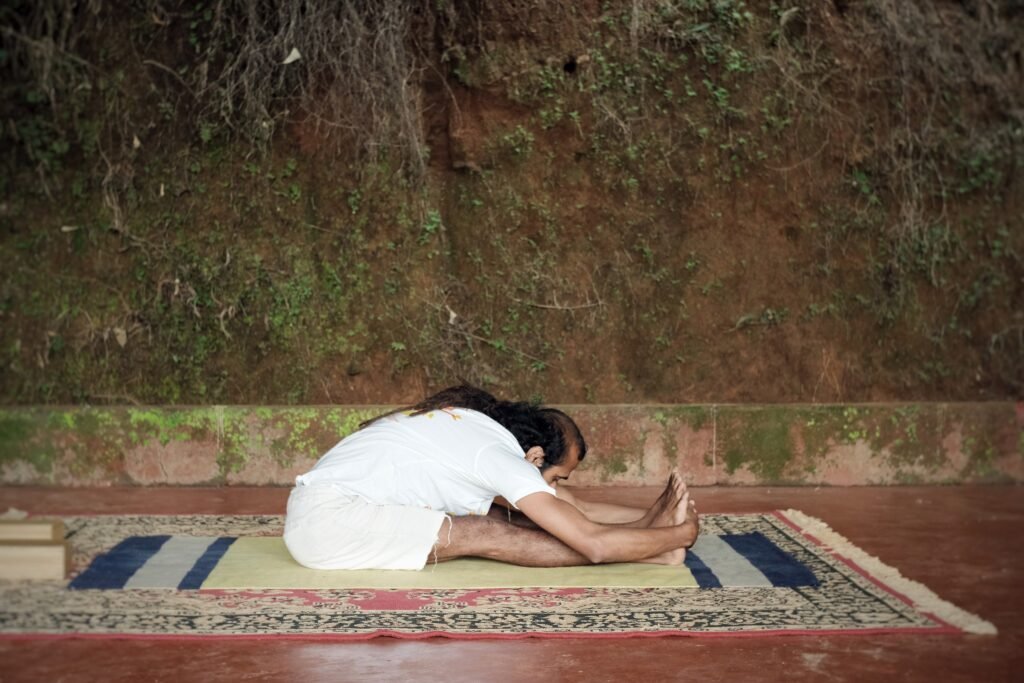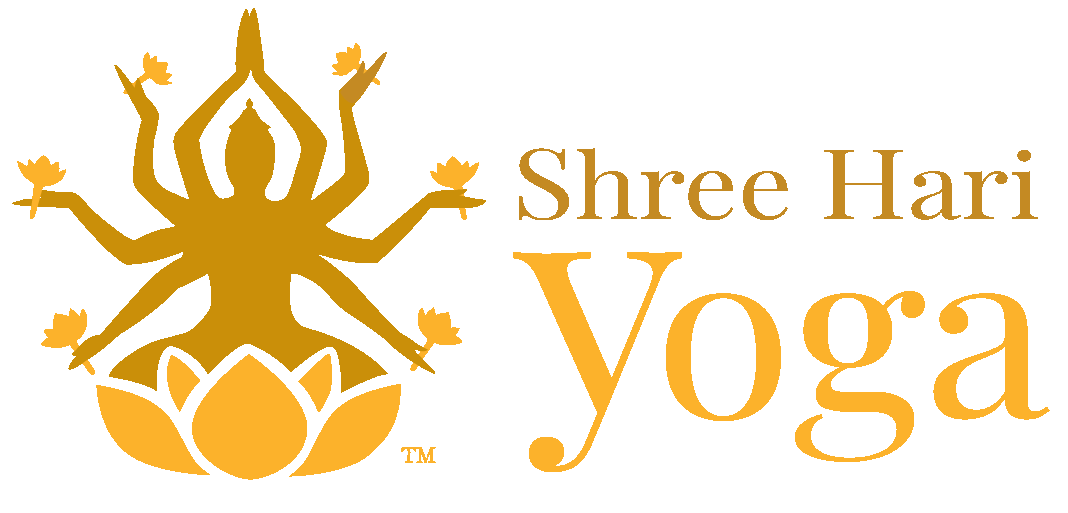
The words “Janu,” “Sirsa,” and “asana,” which translate to “knee,” “head,” and “posture,” respectively, are derived from Sanskrit.
This forward-folding position involves bringing the head to the knee and bending the upper torso from the hips. This position is regarded as a fantastic hip opener and hamstring opener.
It helps to boost energy in the body. Thus, it can be included in flow yoga sequences.
Head to Toe Yoga Steps:
- Adjust the flesh under your seat to ensure that your sit bones are firmly anchored. The sole of your left foot should touch the inside of your right thigh as you flex your left knee.
- Cross your right leg out in front of you, torso square. By tipping your pelvis forward and walking your hands encircling your extended leg towards your right foot, you can lower your torso to your leg so that the bend starts from your hips rather than your lower back.
- Flex your right foot and lower your right thigh’s back toward the floor. When you have bent forward as far as you can, you have two options: keep your spine straight and long neck in an active position, or let your heart relax and lower your head toward the extended leg, causing the spine to round. Decide which feels more comfortable.
- Hold your foot if your hands can reach it. If not, you can rest your hands on the floor or hold onto your calf or ankle.
- Extend the spine widely with each inhalation. Deepen the forward bend with each exhalation.
- After five to ten breaths in this position, straighten both legs, shake them out, and switch sides.
Head To Knee Pose Benefits:
- Strengthening and Stretching: This pose stretches the shoulders, spine, hamstrings, neck, abdominal muscles, and groins because of the forward bend at the hips and the forehead reaching for the knee or further. These muscles benefit from stretching by becoming stronger and becoming more flexible.
- Stimulates the body’s various organs: This type of pressure, which is applied to different points on the soles of the feet with the hands and is referred to as acupressure therapy, further stimulates the body’s various organs. Such pressure stimulates the liver, pancreas, kidney, uterus, stomach, and spleen.
- Improves digestion: The organs in the abdomen are stimulated, aiding digestion, when the lower abdomen is squeezed towards the thighs to the point where the forehead reaches the knee or beyond.
- Enables mental relaxation and reduces anxiety: Janu Sirsasana, also known as the Head to Knee Pose, has same calming effects on the mind as most forward-bending poses. This pose induces a profound sense of calmness when you bend forward and rest your head on the knee in front of you.
- While breathing may take some time to become regular and rhythmic with practice, once mastered, the calmness of the body and mind will gradually lessen the body and mind’s anxiety.
- Reduces sciatica and improves blood supply to the nerves: Janu Sirsasana helps in symptoms related to the sciatic nerve, and regular practice with slow breathing brings in blood to the sciatic nerve, thereby reducing pain both in the lower back and the outer side of the leg.
- Enhances the flexibility of the lower back and the spine: The forward bend pose creates an opening of the lower back, stretching the muscles around it. It also enhances the spine’s flexibility, which is of prime importance, as most yoga poses require a flexible spine and a strong back.
- A very effective way to release the symptoms during the menstrual cycle: If practiced a few days before the beginning of the menstrual cycle, this yoga pose is more effective and will ease the symptoms completely by helping treat heaviness around the lower abdomen.
- Pumps fresh blood to the chest and the lungs: The long deep breath is essential during the practice of Janu Sirsasana, which brings fresh blood to the diaphragm, improving lung function and keeping the chest clean and strong.
- Works great for runners: Pulling the hamstring at this pose and the deep stretch at the hips work as a great way to heal a tired hamstring after running and help open the hamstring before running. Thus, runners should practice this pose at the beginning and end of the running session.
- Balance and harmony: This pose evenly stretches on both sides of the hips and the lower sides of the back and brings about balance. As one side of the lower back or the hip is known to be more flexible, this pose facilitates the stiffer side of the lower back, and the hips open up, creating a balance.
Head To Knee Pose Modifications
- Use a blanket under the knees: In the Head to Knee Pose, the stiffest part of the leg to stretch is the knee, and for most people, the knees bend rather than fully straighten out. A blanket that falls below the knee should work in these circumstances and make it easier to move forward.
- If the lower back is stiff or the hip does not facilitate the torso to go forward, sitting on a blanket or a yoga block can help support the back and the hip. This ensures stretch at the lower back during the practice of this pose with hip support.
- Reaching for the feet could be challenging; hence, one may use yoga straps placed around the feet of the extended leg.
Head To Knee Pose Contraindications:
- Sufferers of severe lower back pain must be cautious: In this pose, one side of the hip is more flexible than the other. One side of the muscles at the back would be stiffer than the other and may aggravate the injury if pulled forward without understanding the body’s movement; hence severe low back pain would only worsen the situation.
- If the knees are injured, the stretch one experiences behind the knee in Janu Sirsasana may aggravate the injured knee. The injured knee would not support the hamstring; hence, tensions at the hamstrings would also escalate, causing more stiffness during the practice. Therefore, it is advisable to exercise precautions or guidance when practicing this pose with an injured knee.
- Pregnant women should not practice forward bending as there is pressure on the lower abdomen. It can be challenging to perform this pose if you have a neck or shoulder injury because you need to pull your neck and shoulders forward to give your body a deep stretch to reach your forehead toward the knee.
